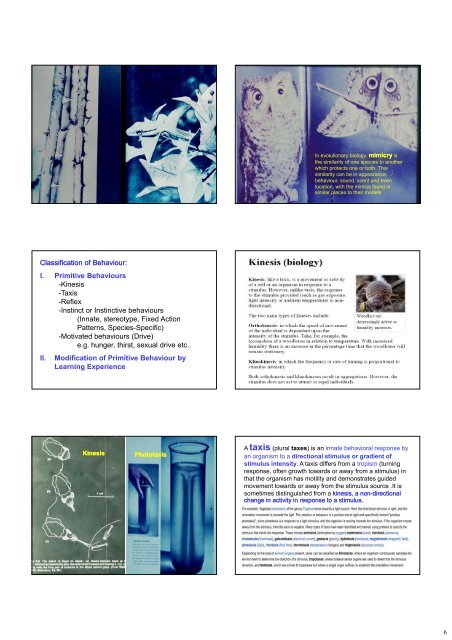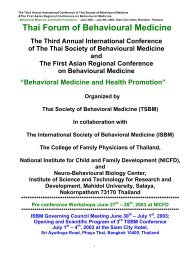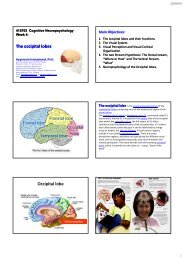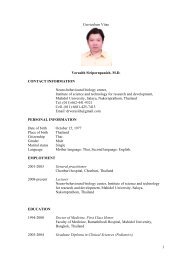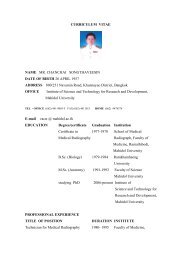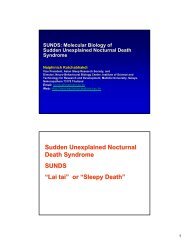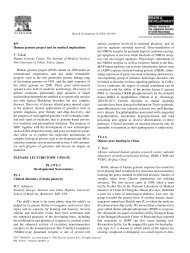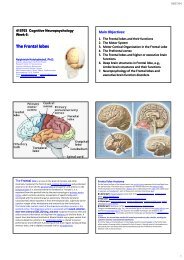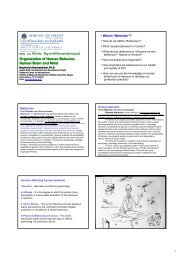1 Development and Organization Development and Organization of ...
1 Development and Organization Development and Organization of ...
1 Development and Organization Development and Organization of ...
Create successful ePaper yourself
Turn your PDF publications into a flip-book with our unique Google optimized e-Paper software.
In evolutionary biology, mimicry is<br />
the similarity <strong>of</strong> one species to another<br />
which protects one or both. This<br />
similarity can be in appearance,<br />
behaviour, sound, scent <strong>and</strong> even<br />
location, with the mimics found in<br />
similar places to their models<br />
Classification <strong>of</strong> Behaviour:<br />
I. Primitive Behaviours<br />
-Kinesis<br />
-Taxis<br />
-Reflex<br />
-Instinct or Instinctive behaviours<br />
(Innate, stereotype, Fixed Action<br />
Patterns, Species-Specific)<br />
-Motivated behaviours (Drive)<br />
e.g. hunger, thirst, sexual drive etc..<br />
II. Modification <strong>of</strong> Primitive Behaviour by<br />
Learning Experience<br />
Kinesis<br />
Phototaxis<br />
A taxis (plural taxes) is an innate behavioral response by<br />
an organism to a directional stimulus or gradient <strong>of</strong><br />
stimulus intensity. A taxis differs from a tropism (turning<br />
response, <strong>of</strong>ten growth towards or away from a stimulus) in<br />
that the organism has motility <strong>and</strong> demonstrates guided<br />
movement towards or away from the stimulus source .It is<br />
sometimes distinguished from a kinesis, a non-directional<br />
change in activity in response to a stimulus.<br />
6


